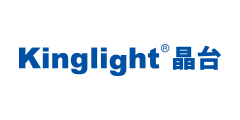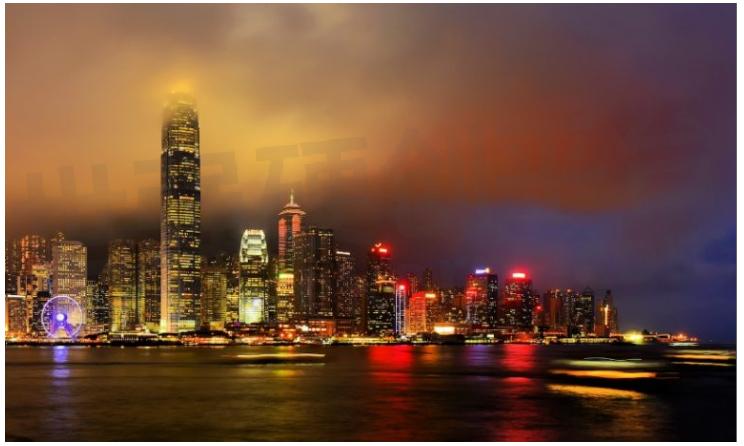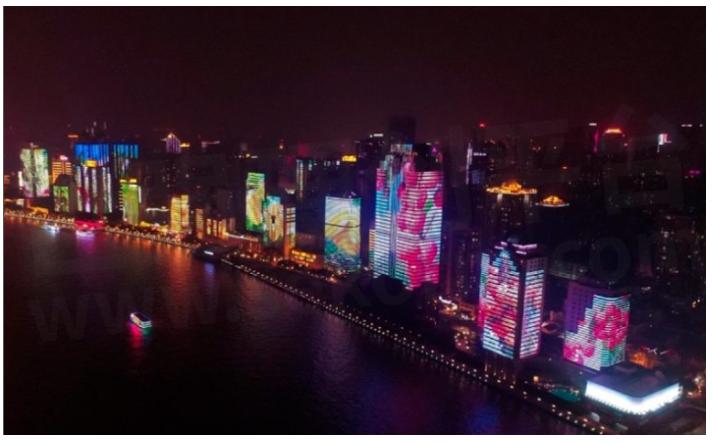How to Reduce LED Display Light Pollution

Nowadays LED Displays are being widely used in advertising, information broadcasting, and events promotion because of their impeccable advantages, including high brightness, wide viewing angle, visual impacts, and a longer life with less power consumption and maintenance. Meanwhile, LED displays are creating more light pollution due to their vast applications. Here in this article, we’ll explain the causes of light pollution of LED displays and learn ways to reduce LED display light pollution.

While beautifying city’s scenary, LED screens along with lighting contributes to light pollution
Causes of LED Display Light Pollution
While LED displays are giving more visual impact in our daily life, they also disturb us a lot with light pollution issues like high brightness and nearly 24 hours operation in day and night. Generally, below factors will result in LED display light pollution.
Excessive Brightness
LED displays can produce high levels of brightness, especially in outdoor installations or in environments with poor ambient lighting conditions. When the brightness is set too high or not properly controlled, it can result in light pollution by creating excessive glare and light spillage beyond the intended viewing area.
Improper Beam Control
LED displays emit light in a wide beam angle, which can lead to light dispersion in unintended directions. If the display is not properly designed or lacks adequate beam control measures, such as shielding or louvers, the light can scatter and contribute to light pollution.
Inadequate Light Containment
LED displays that are not properly enclosed or shielded can allow light to escape in unintended directions. This can occur when there are gaps or openings around the edges of the display, allowing light to spill out and contribute to light pollution.
Improper Placement and Orientation
The location and orientation of LED displays play a significant role in light pollution. If the display is positioned in a way that allows the light to be directed upward, sideways, or beyond the intended viewing area, it can create light pollution by illuminating the sky, adjacent buildings, or surrounding spaces.
Lack of Light Control Features
Some LED displays may lack adequate brightness control features or automatic dimming capabilities. Without these controls, the display may operate at a constant high brightness level, regardless of the ambient lighting conditions, contributing to unnecessary light pollution.
Non-compliance with Regulations
In some cases, LED displays may not adhere to local regulations or guidelines regarding light pollution. This can occur if the display exceeds brightness limits, has improper beam angles, or fails to meet other specific requirements set by regulatory authorities.
To prevent LED display light pollution, it is important to consider these factors during the design, installation, and operation of the displays. Let’s get to the next paragraphs to learn more details over light pollution reduction of LED displays.

Ways to Reduce LED Display Light Pollution
Reducing LED display light pollution can be achieved through various measures. Here are some effective ways to minimize light pollution caused by LED displays.
Proper Placement and Orientation
Careful consideration should be given to the placement and orientation of LED displays. Aim to direct the light output towards the intended viewing area while minimizing light spillage beyond the target zone. Position the display in a way that prevents excessive upward or sideways light dispersion.
Beam Control and Shaping
Implementing optical devices such as louvers, shields, or baffles can help control the direction and spread of light emitted by LED displays. These devices can reduce light scatter and ensure that the majority of the light is directed towards the desired area, reducing light pollution in unintended directions.
Brightness and Intensity Control
Adjusting the brightness and intensity of LED displays is crucial in reducing light pollution. Ensure that the display is set to an appropriate brightness level that meets the requirements of the specific environment while avoiding excessive luminosity that can contribute to light pollution.
Time-Based Dimming
Implementing automatic dimming or brightness reduction features based on time of day can help minimize light pollution during nighttime hours when ambient light levels are lower. This can be achieved through scheduling or using light sensors that adjust the display’s brightness according to the surrounding lighting conditions.
Selecting Directional LEDs
Opt for LED modules and panels that have directional light emission characteristics. These LEDs emit light in a more focused and controlled manner, reducing the chances of light pollution and minimizing the amount of light scattered outside the desired viewing area.
Shielding and Light Containment
Consider using light shields or enclosures around LED displays to limit light spillage and direct the emitted light towards the intended projection surface or viewing area. This helps contain the light within the desired zone and prevents it from causing unnecessary light pollution.
Compliance with Regulations and Guidelines
Familiarize yourself with local regulations and guidelines pertaining to light pollution. Ensure that the LED display installation adheres to these standards, including brightness limits, beam angle restrictions, and other relevant requirements.
By implementing these measures, LED display light pollution can be significantly reduced, making the displays more environmentally friendly and considerate of surrounding areas. It’s important to strike a balance between achieving the desired visual impact and minimizing the negative effects of light pollution on the environment and neighboring spaces.
- +1 Like
- Add to Favorites
Recommend
- Sphere LED Display, A Creative Ball-like LED Display
- LED Display Brightness
- LED Display Types
- Stage LED Display, A Large LED Screen Being Placed at the Back of a Stage
- Top 10 Largest LED Displays in The World
- Flexible LED Displays: Features & Types
- How to Make a 3D LED Display and What is the Advantages of a 3D LED Display
- How Much Does An LED Dance Floor Cost
This document is provided by Sekorm Platform for VIP exclusive service. The copyright is owned by Sekorm. Without authorization, any medias, websites or individual are not allowed to reprint. When authorizing the reprint, the link of www.sekorm.com must be indicated.



























































































































































































































































































































































































































































































































































































































































































































































































































































































